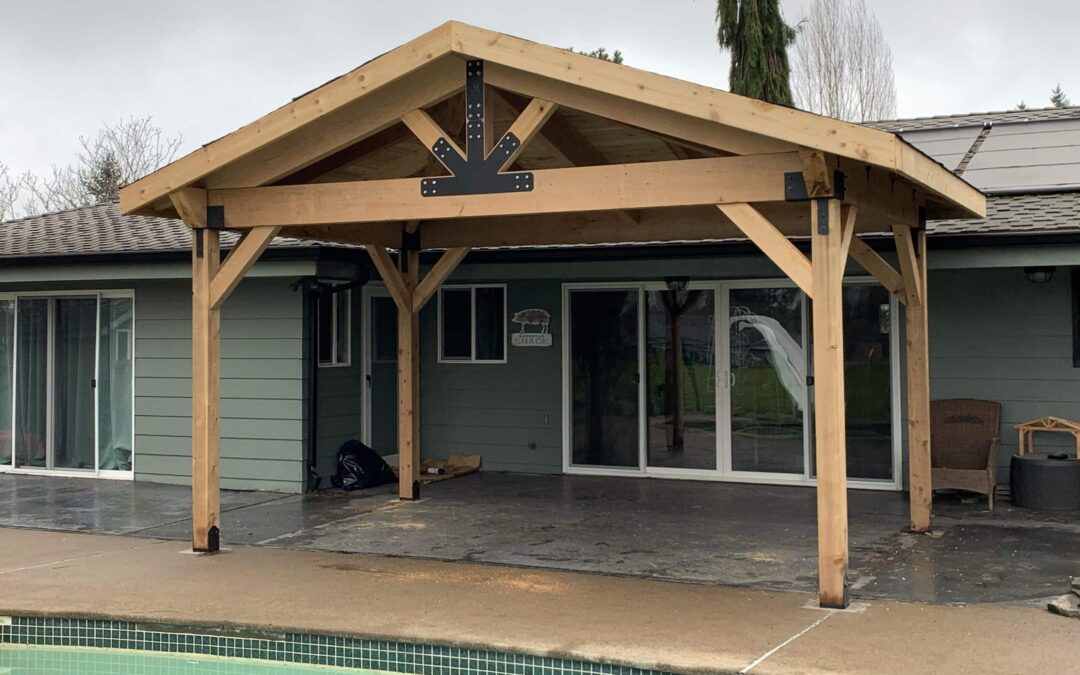In the world of architecture, roof overhangs are not merely functional elements but key design features that play a crucial role in both form and function. These extensions beyond the exterior walls of a building serve various purposes, from protecting the structure and its occupants to contributing to the overall aesthetic appeal. In this article, we delve into the significance of roof overhangs in architecture, exploring their functional benefits and the visual impact they bring to a building.
Functional Benefits:
- Protection from the Elements: One of the primary functions of a roof overhang is to shield the building and its occupants from the elements. Whether it’s rain, snow, or harsh sunlight, the overhang acts as a protective barrier, preventing direct exposure and minimizing the impact of weather on the exterior walls. This protection is essential for maintaining the structural integrity of the building over time.
- Temperature Regulation: Roof overhangs contribute to energy efficiency by helping regulate the interior temperature of a building. In hot climates, they provide shade and reduce solar heat gain, keeping interiors cooler and reducing the need for excessive air conditioning. In colder climates, overhangs can allow winter sunlight to penetrate, aiding in natural heating and minimizing energy consumption.
- Preventing Water Damage: Beyond providing shade, roof overhangs play a crucial role in preventing water damage. By directing rainwater away from the building’s foundation, they help maintain a dry and stable environment. This is particularly important for the longevity of the structure, as water damage can lead to issues such as mold growth, rot, and deterioration of building materials.
- Enhanced Outdoor Living Spaces: Roof overhangs extend the usable space around a building by creating covered outdoor areas. This can include patios, porches, and entryways that remain sheltered from the elements, allowing residents to enjoy the outdoors regardless of the weather conditions. These spaces serve both practical and recreational purposes, adding versatility to the overall design.
Aesthetic Impact:
- Architectural Character: Roof overhangs significantly contribute to the architectural character of a building. They can be designed in various styles, from minimalistic and modern to ornate and traditional, influencing the overall visual impression of the structure. The choice of materials, proportions, and detailing in the overhang design can enhance the building’s aesthetic appeal and create a sense of identity.
- Balance and Proportion: Well-designed roof overhangs contribute to the balance and proportion of a building’s façade. They can be used strategically to break up the verticality of a structure, creating a harmonious relationship between different elements. This attention to balance not only adds visual interest but also ensures that the building integrates seamlessly into its surroundings.
- Play of Light and Shadow: The shadows cast by roof overhangs create a dynamic interplay of light and shadow, adding depth and dimension to the building’s exterior. This subtle but impactful effect contributes to the overall visual richness of the architecture, making the structure more visually engaging throughout the day.
- Customization and Personalization: Roof overhangs offer architects and homeowners the opportunity for customization and personalization. Whether extending over windows, doors, or entire facades, these architectural elements can be tailored to suit the specific style and preferences of the occupants. This flexibility allows for a creative expression that goes beyond mere functionality.
Conclusion:
In the realm of architecture, roof overhangs emerge as versatile elements that seamlessly blend functionality with aesthetic appeal. Beyond their fundamental role in protecting buildings from the elements, overhangs contribute to energy efficiency, create additional usable spaces, and significantly shape the overall look and feel of a structure. As architects continue to explore innovative designs, roof overhangs remain a timeless feature that adds both practical value and visual interest to buildings of all types and styles.

